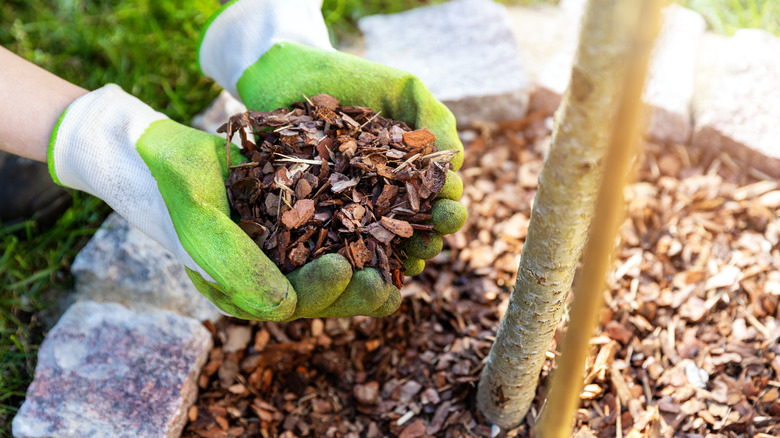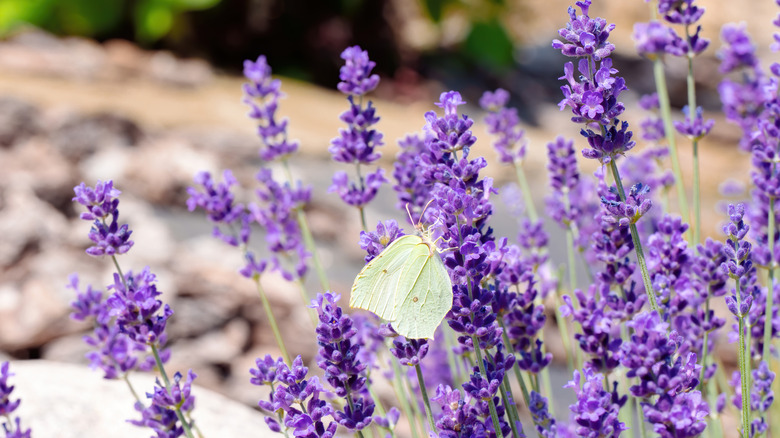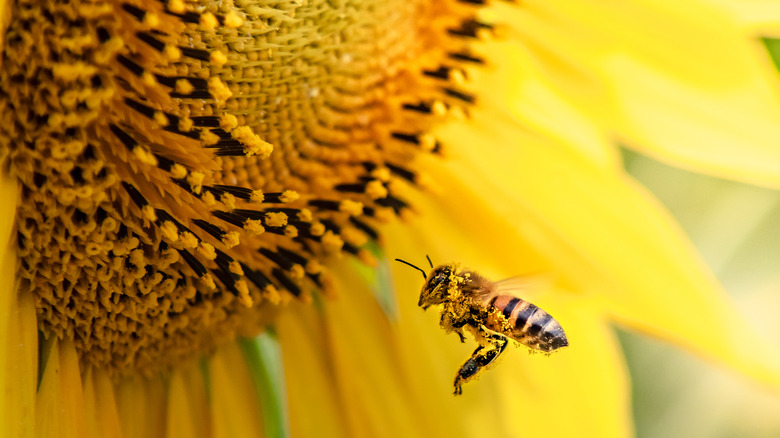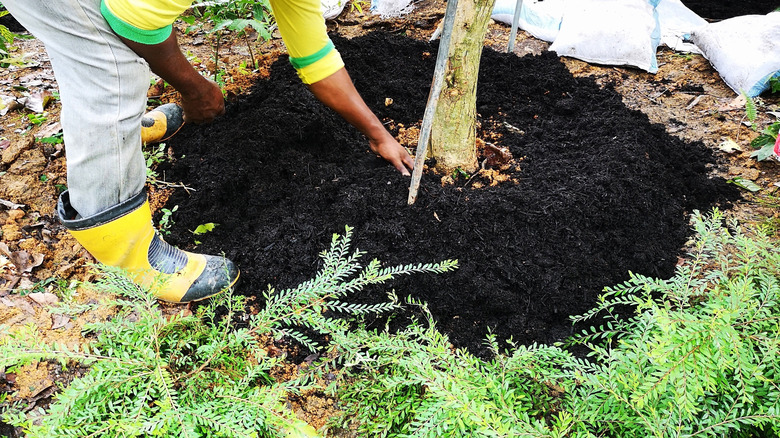Which Mulch Is Good For Pollinators?
Many of us want to be conscientious community members who consider our neighbors' needs as readily as we think about our own. One terrific way to do that is by growing gardens that encourage and cultivate an environment for pollinators. Pollinators are the backbone to propagating the flowers we love and fruits we need. According to the U.S. Forest Service, more than 80% of plants worldwide count on pollination to keep up their blooms and crop cycles. It is a situation of help-them-help-us by taking small, easy steps. Planting daisies, for instance, incorporates splashes of yellow and orange that attract butterflies and then offer great landing pads for a hospitable environment. Being pollinator-friendly is simple, that is, until we get low down, all the way to the dirt, and face the regularly overlooked ground level decision: to mulch or not to mulch.
Mulch is great for impeding weeds, says Joe Gardener. By blocking light, it thwarts germination before weeds get a chance to take root. Mulch cuts back on subsequent weed seeds that would otherwise get blown off to other parts of the garden, and it also aids the topsoil from getting hard and encased at the surface. That's good news for plants in need of tilled soil to absorb rain and resist erosion. Mulch is, however, terrible for pollinators. Keep reading to find out why mulch needs special consideration when it comes to pollinator-friendly gardens and what you can do about it.
Why mulch hurts pollinators
Mulch is a problem for pollinating insects, particularly bees. One issue is that some bees nest in the ground. These bees like to dig into bare ground in order to snuggle into an underground respite between zips back and forth among your plants, and mulch that tamps out weeds inhibits these nesting practices. Bees gather and redistribute nectar that pollinates nearly 3/4 of the crops used to feed the majority of the world's population, according to BBC, and for that, they need a relatively close spot to rest their weary wings or lay their eggs. You can spot these bee burrows by the little dirt piles you see in your garden that have a big hole in the middle.
In addition to bees, other pollinators like moths and butterflies need a combination of bare ground and random debris from foliage, like leaves and branches, to get through the winter, says the Xerces Society. Natural garden debris rather than mulch has other benefits too, like attracting beetles that are natural predators for unwanted pests such as cockroaches. In addition to mulch hurting pollinators, your own casual walks while weeding and tending your plants is a problem for pollinators. Reconsider walking through your garden in order to minimize disruption of pollinators burrowing underground as much as possible.
Mulch that is pollinator-friendly
Given the fact that mulch does mitigate weeds and can be good for soil erosion, you may not need to forgo it altogether. Simply consider pollinator-friendly options. Try mulch that resembles the decaying plant matter that you already find around your garden, says Real Gardens Grow Natives. When it comes to all things pollinator-friendly, the need for native cannot be overstated. This means native plants and, in the case of mulch, native materials for ground cover. It goes without saying that native never includes plastic or rubber. Your soil needs nutrients. The broken leaves, sticks, and other debris from nearby shrubs can keep weeds down, seeds from blowing, and soil from eroding just as well as other mulches; they'll do it without locking pollinators out of their coveted underground tunnels and nesting spaces.
Mulch that disintegrates within a year may be a good solution for pollinator-friendly gardens, says Corner Pollinator Garden. They also second the plan for using your yard's composted leaves and leftover grass clippings. Another option for pivoting away from mulch in general is sowing ground cover plants. Much like mulch, they will protect the soil. Unlike mulch, however, they will not hinder pollinators from burrowing into the ground for shelter.
Mulch practices that are pollinator-friendly
One pollinator-friendly mulch practice to consider is less cleaning, more leaving — as in, leave some dead flowers, plants, leaves, and branches lying around that you might otherwise haul away for the sake of aesthetics, says Annapolis Native Landscape. Maybe you still cut back the plants that need trimming, but do so by half, leaving shoots and twigs for pollinators to shelter under and around. When you cut, leave the clippings on the ground to work as natural mulch.
Another tip is to simply use less mulch, leaving a few spots completely bare. Consider incorporating a mulch-free zone around the perimeters of plants by a few inches to a foot. The mulch lying farther away can do its duty of keeping down weeds and fighting soil erosion, and the bare spots up close to the plants will offer the underground burrowers room to tunnel away.
One tip to keep in mind is to avoid cedar mulch altogether, says Gardening Chores. It has a smell that actually repels pollinators and is often chemically dyed colors other than its natural reddish-brown. Although cedar mulch lasts a long time, which is handy, and it is easy to source because cedar is a popular wood, it fails to seep good nutrients back into the soil as successfully as other mulches tend to do. Save this mulch for your walking paths or pet relief areas.



